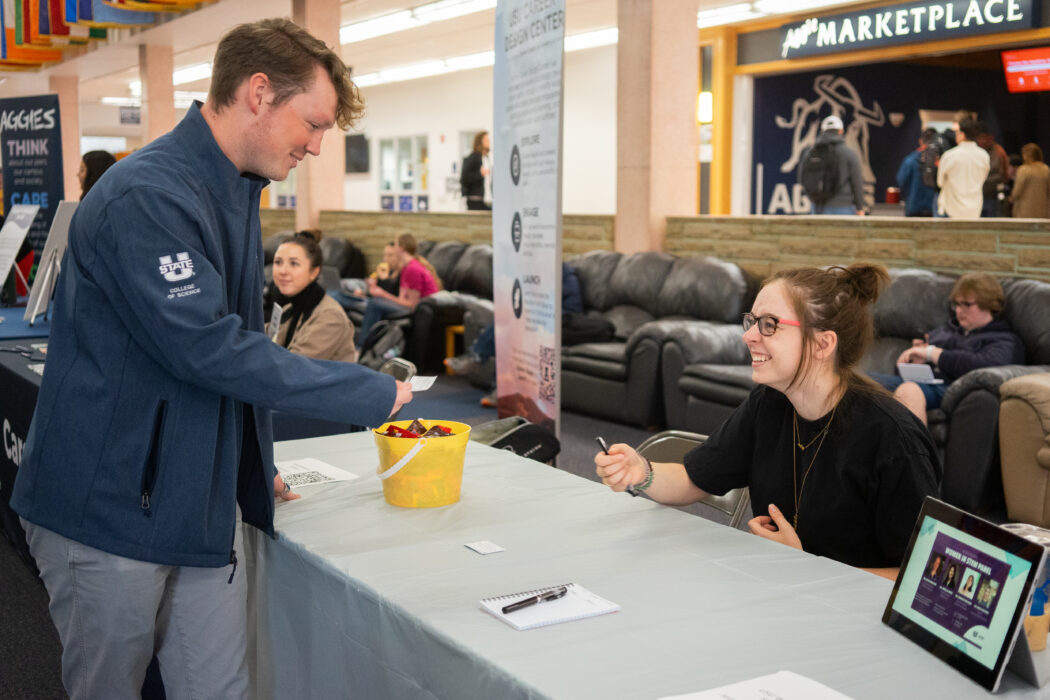USU celebrates Natural Resource Week, QCNR
Utah State University celebrated Natural Resource Week, with five days of events from March 25-29 showcasing the S.J. and Jessie E. Quinney College of Natural Resources.
Nathan Omer, the college senator, coordinated this year’s events.
“The focus of the college is obviously natural resources, and ways that we can better utilize and manage the resources that we have,” Omer said.
The week was filled with a variety of events to highlight the importance of natural resources, including yoga, planting flower pots, a trivia night and a campfire at Green Canyon.
“Our events try to span what we feel most students like to do,” Omer said. “We’re also trying to spend as much time outside as we can.”
QCNR partnered with the College of Science and the College of Engineering to hold the You Belong in STEM & natural resource science fair.
“I think a lot of people don’t realize that there’s a lot of science that goes on in natural resources,” Omer said. “We have tons of research going on.”
The science fair gave students a glimpse into what it is like to be a STEM student, and it highlighted the student research and academics going on within the field of natural resources.
“Our entire society is based on and supported by natural resources,” Omer said. “I think that is deserving of celebration.”
Eric LaMalfa, an assistant professor in wildland resources, spoke on his perspective of working within the field.
“What separates us from biology or agriculture is that our students are working with natural ecosystems and communities to solve natural resource issues,” LaMalfa said. “That prepares our students to solve some of these wicked problems like climate change, invasive species and human wildlife conflicts.”
Natural resources are a big part of the climate change conversation, specifically how to better manage resources so they sustain societies’ future needs.
According to the Ford Foundation, a private philanthropy foundation aimed at promoting human welfare, the rapid growth of natural resource extraction has been contributing to environmental and social damage, especially in minority communities.
“These issues require people talking and working together to solve complicated problems that you can’t solve with just biology or economics or social science,” LaMalfa said. “Natural resources are a blend of all those things.”
There are three departments in QCNR: environment and society, watershed sciences and wildland resources.
The department of environment and society focuses on the social side of developing better community and policy interactions with the environment.
“They do a lot of talking to people and thinking about policy and economics, and what these decisions mean for our communities,” LaMalfa said.
The department of watershed sciences focuses on water-based conservation, restoration and the ways rivers and streams change over geologic time.
“Those rivers are alive and moving,” LaMalfa said. “But we don’t see that.”
The department of wildland resources focuses on terrestrial wildlife and vegetation management.
“We learn how to assess the health of an ecosystem by looking at the plants, the species that are there and the composition,” LaMalfa said.
According to LaMalfa, all of the departments are interconnected and serve the purpose of helping students understand the Earth’s natural ecosystems and services. He said each department is important in its own right because they each influence the health and wellness of society.
“There’s a give and take between the vegetation, the soils, the air and the animals,” LaMalfa said. “We try to take all of that into account when making decisions on how people can recreate, how many animals can be hunted and how we’re trying to restore ecosystems.”
LaMalfa said any major can help contribute to making Earth a healthier place, and Natural Resource Week is a great opportunity for students to learn about how they can do so.
“It’s an opportunity to think about if you’re an economics major, and if you care about these things, how can your study of economics be a part of this new, better way that we’re going to do things in the future,” LaMalfa said.
According to LaMalfa, natural resources is a vast and complex field that requires perspectives from agriculture, biology, policy, engineering, art and more to help solve large-scale issues.
“We can all work together to either be getting the word out or doing innovative, interdisciplinary science that’s thinking about these questions in new ways,” LaMalfa said.

